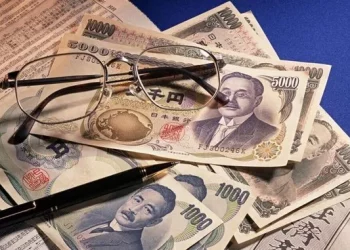Singapore, a global financial hub and a thriving city-state in Southeast Asia, is known for its economic prowess and financial stability. At the heart of its economic transactions and financial activities is its official currency: the Singapore Dollar. This article delves into the specifics of the Singapore Dollar, exploring its history, features, significance, and impact on both the local and global economy.
Historical Background
Origins of the Singapore Dollar
The Singapore Dollar (SGD) has its origins in the early 19th century, when Singapore was a British colony. The currency system at that time was a mix of various currencies, including the British Straits Dollar. However, as Singapore’s economy grew and evolved, the need for a distinct national currency became evident.
Introduction of the Modern Singapore Dollar
The modern Singapore Dollar was introduced on June 12, 1967, following Singapore’s independence from Malaysia. It replaced the Malayan Dollar, which had been in use since Singapore’s merger with Malaysia in 1963. The introduction of the Singapore Dollar was a significant step in establishing Singapore’s economic independence and stability.
Development and Evolution
Over the decades, the Singapore Dollar has undergone several changes, including redesigns and the introduction of new denominations. These changes reflect Singapore’s economic progress and its role as a major global financial center. The currency has evolved to include advanced security features and to adapt to changing economic conditions.
Currency Features
Design and Denominations
The Singapore Dollar is issued by the Monetary Authority of Singapore (MAS) and is available in both banknotes and coins. The design of the currency reflects Singapore’s cultural heritage and achievements.
Banknotes: Singapore’s banknotes come in denominations of S$2, S$5, S$10, S$50, and S$100. Each note features a distinct design, showcasing important aspects of Singapore’s history and development. For example, the S$5 note depicts the Merlion, a national symbol of Singapore, while the S$50 note features an image of the Singapore skyline.
Coins: The coins are available in denominations of 5 cents, 10 cents, 20 cents, 50 cents, and S$1. The coins are made from various metals and are designed with different patterns to aid in easy identification.
Security Features
To prevent counterfeiting and ensure the integrity of the currency, the Singapore Dollar incorporates various security features. These include:
Watermarks: A prominent feature visible when the note is held up to the light.
Security Threads: Embedded threads that are partially visible on the surface of the banknote.
Microprinting: Tiny text and patterns that are difficult to replicate without specialized equipment.
Color-Shifting Ink: Ink that changes color when viewed from different angles.
Economic Significance
Role in the Local Economy
The Singapore Dollar is central to Singapore’s economy, serving as the primary medium of exchange for goods and services. It plays a crucial role in facilitating everyday transactions, from retail purchases to large-scale business deals. As a stable and widely accepted currency, the SGD helps maintain economic stability and confidence in Singapore’s financial system.
Impact on International Trade
Singapore’s economy is highly dependent on international trade, and the Singapore Dollar plays a key role in this sector. The currency’s stability and convertibility make it an attractive option for global trade transactions. Singapore is known for its strong trade relationships with countries around the world, and the SGD is frequently used in trade agreements and contracts.
Investment and Financial Markets
The Singapore Dollar is also significant in the global financial markets. It is traded on international forex markets and is a popular choice for currency trading due to its stability and liquidity. The SGD is included in various financial instruments, such as currency swaps and derivatives, and is often used as a benchmark in regional financial transactions.
Exchange Rates and Currency Conversion
Exchange Rate Mechanism
The value of the Singapore Dollar relative to other currencies is influenced by various factors, including economic conditions, interest rates, and geopolitical events. The Monetary Authority of Singapore (MAS) manages the SGD’s nominal effective exchange rate (NEER) to ensure it remains stable and competitive. The MAS uses a managed float system, allowing the SGD to fluctuate within an undisclosed policy band.
Currency Conversion
Currency conversion is an essential aspect of international travel and trade. The Singapore Dollar is widely accepted for conversion at banks, currency exchange services, and international airports. The exchange rate for the SGD is influenced by supply and demand dynamics in the foreign exchange market.
Impact of Exchange Rate Fluctuations
Fluctuations in the Singapore Dollar’s exchange rate can impact various sectors of the economy, including exports, imports, and foreign investments. A strong SGD may benefit importers by reducing the cost of overseas goods, while a weaker SGD can make Singapore’s exports more competitive on the global stage.
See Also: What Is Cash Limits in Singapore: A Quick Guide
The Singapore Dollar in the Global Context
Comparison with Other Currencies
The Singapore Dollar is often compared to other major currencies, such as the US Dollar (USD), Euro (EUR), and Japanese Yen (JPY). The SGD is known for its stability and is frequently used as a safe-haven currency in times of global economic uncertainty.
Regional Influence
In Southeast Asia, the Singapore Dollar is a significant currency due to Singapore’s economic prominence. The SGD is often used as a reference currency for trade and investment in the region. Singapore’s strong financial sector and economic stability contribute to the SGD’s influence in regional financial markets.
Global Financial Position
Globally, the Singapore Dollar is considered one of the world’s strongest and most stable currencies. It is included in various international currency indices and is widely used in cross-border transactions. Singapore’s robust financial regulations and sound economic policies enhance the SGD’s reputation on the global stage.
Future Prospects
Economic Outlook
The future of the Singapore Dollar is closely tied to Singapore’s economic performance and global economic trends. As Singapore continues to develop as a global financial hub, the SGD is expected to maintain its role as a stable and influential currency.
Technological Advancements
Advancements in technology, such as digital currencies and blockchain, may impact the future of traditional currencies, including the Singapore Dollar. The Monetary Authority of Singapore has been actively exploring digital currency initiatives and innovations in financial technology, which could shape the future of the SGD.
Challenges and Opportunities
The Singapore Dollar faces various challenges and opportunities, including fluctuations in global markets, changes in trade dynamics, and evolving economic policies. Singapore’s ability to navigate these challenges and seize opportunities will influence the future trajectory of the SGD.
Conclusion
The Singapore Dollar is a key component of Singapore’s economic framework, reflecting the nation’s stability, growth, and global financial presence. From its historical origins to its current role in international trade and investment, the SGD continues to play a vital role in both local and global economies. Understanding the features, significance, and future prospects of the Singapore Dollar provides valuable insights into Singapore’s financial landscape and its impact on the world stage.
Related Topics:


























